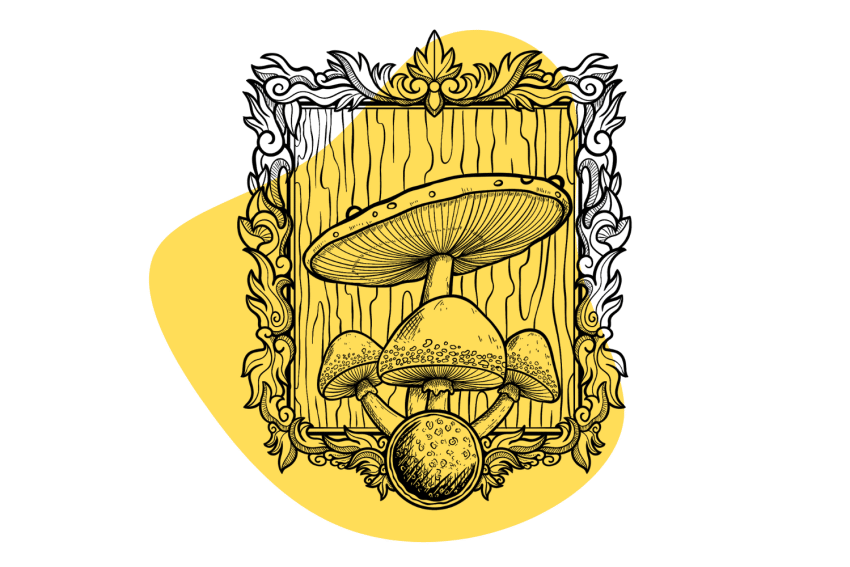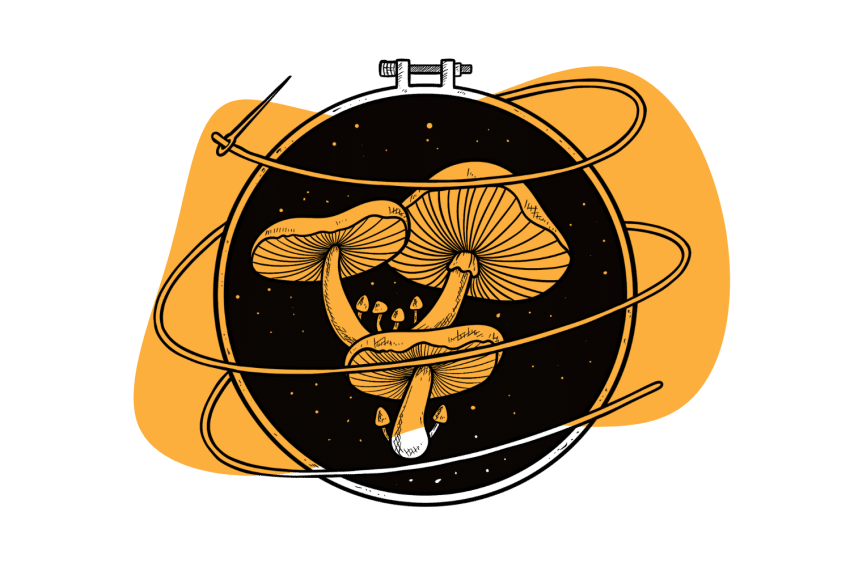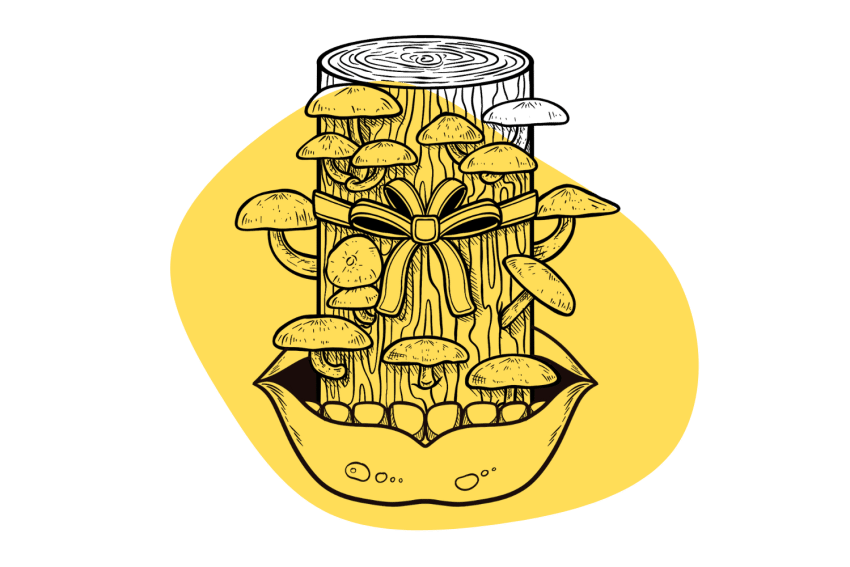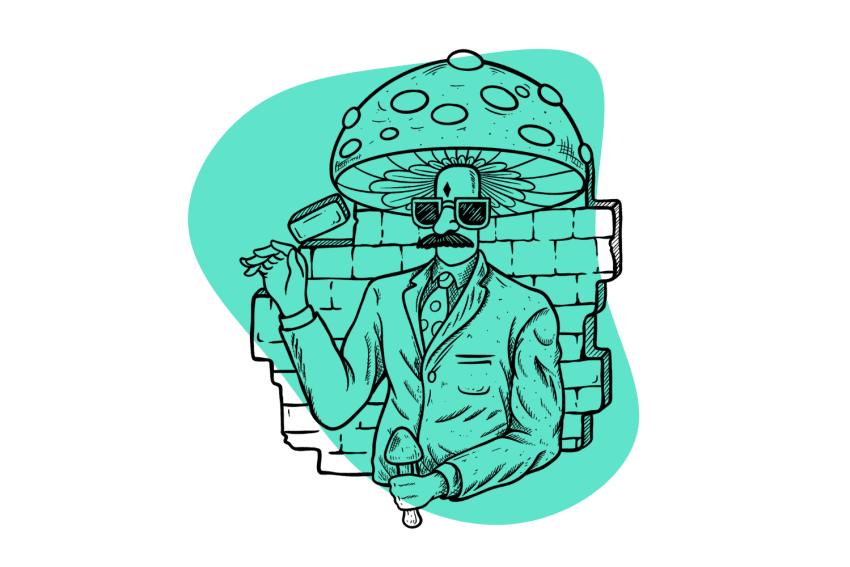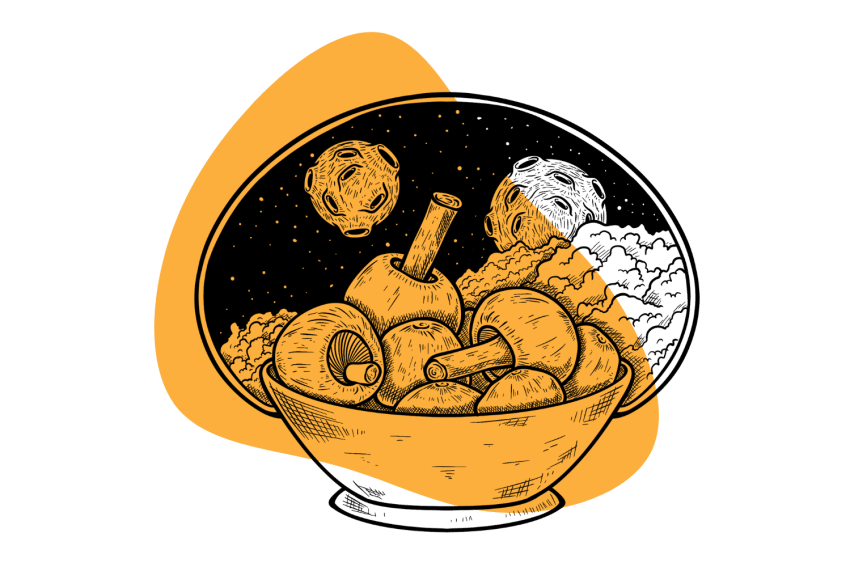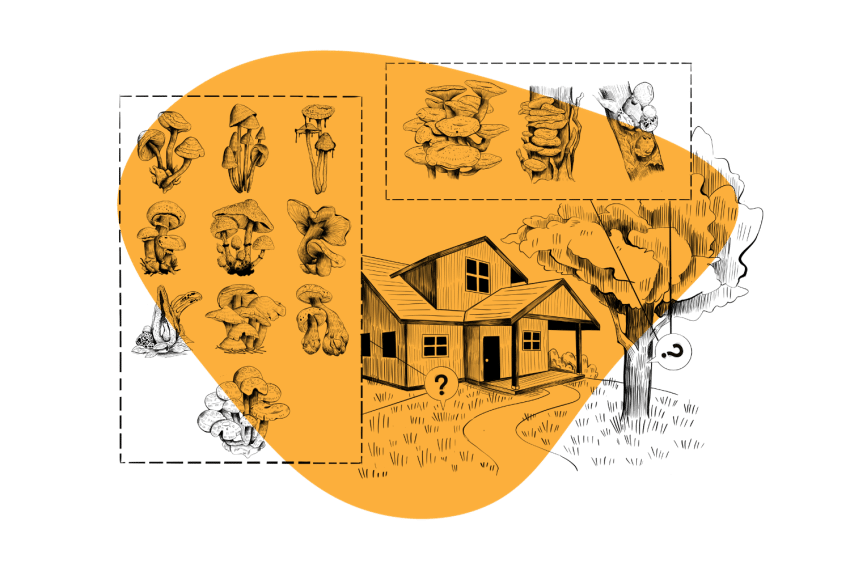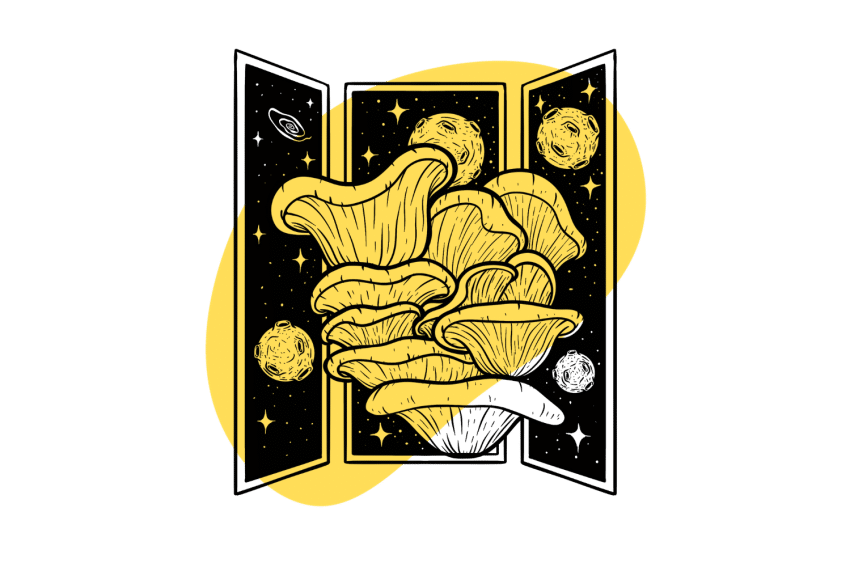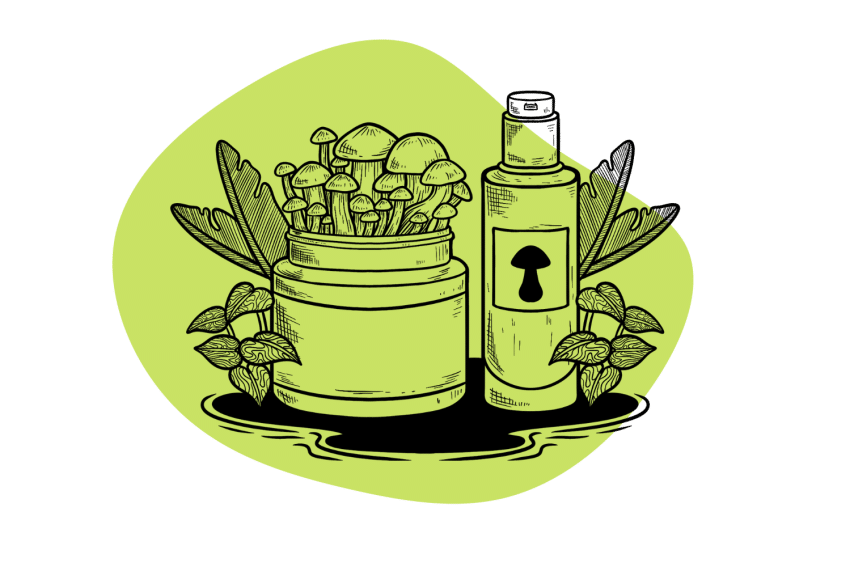Morel Mushroom Maps: Where Can You Find Morel Mushrooms?
Morel mushrooms are alien-looking fruits that regularly pop up after forest fires across the globe. Although often associated with a tragic event, they’re a prized gourmet mushroom that thousands of foragers dream about…
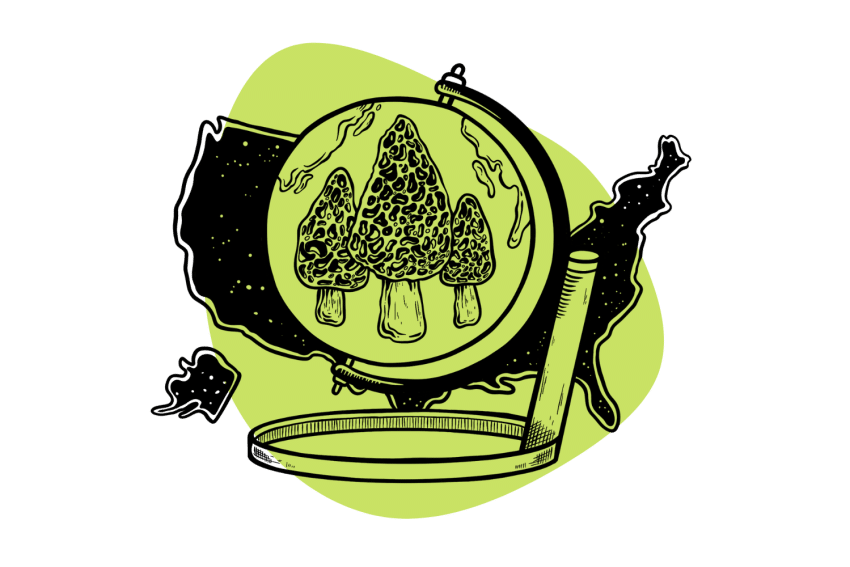
Morels are among the most prized gourmet mushrooms on the planet. These unusual-looking shrooms are on the hit lists of thousands of foragers across the U.S., Canada, and Europe when the season comes around.
Morel mushrooms have an earthy, nutty flavor, and they’re valued by chefs and amateur cooks alike. However, this delightful fungus can be difficult to find. Knowing where to look is half the job when it comes to collecting a haul of morels. If you know where to look, finding, identifying, and collecting the mushrooms is relatively easy.
In this article, we’ll be looking at the following:
- What are morel mushrooms
- What countries morels grow in
- Morel growing environments
- Morel growing conditions
- What time of year morel mushrooms grow
- Morel mushrooms maps in the United States
- Morel mushrooms maps in Canada
- Morel mushrooms maps in Europe
- Morel mushrooms maps in the United Kingdom
I’ll also be answering a few frequently asked questions about Morel mushrooms and fungi foraging as a whole.
Related: How to Forage for Wild Mushrooms
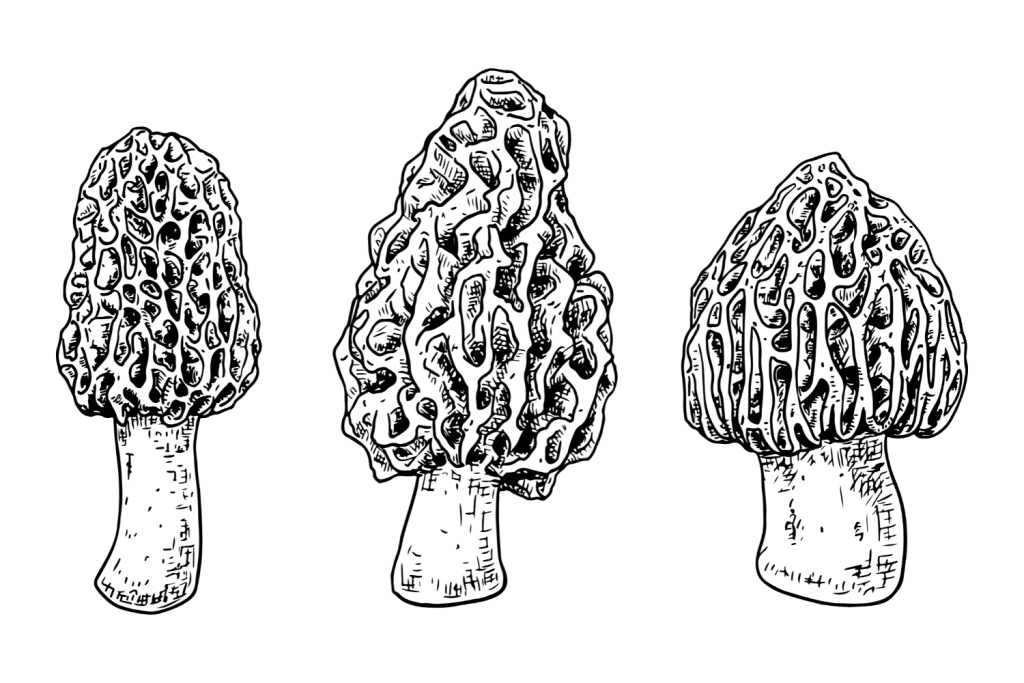
What Are Morel Mushrooms?
Morel mushrooms — species in the genus Morchella — are mycorrhizal fungi that are prized for their unique appearance and flavor.
The term “morel” is used to describe several different species within the Morchella genus, but Morchella esculenta is the most recognized and common. Most morel species look the same with their wrinkled honeycomb caps and thick, hollow stipes. However, they can differ in color, ranging from pale yellow to dark brown.
Morel mushrooms have an earthy, nutty flavor and a meaty texture. They’re a choice edible that’s highly desired among chefs, mushroom enthusiasts, and “gourmet” home cooks. Morels are extremely difficult to grow in an artificial environment, so they aren’t commercially cultivated like other species. These mushrooms must be harvested from the wild.
Like many wild mushrooms, morel mushrooms do have look-alikes. Some species look similar — these are known as “false morels.” However, morels are surprisingly easy to identify, and these look-alike species can be ruled out easily if you’ve done your research.
What Countries Do Morels Grow In?
Morels can be found growing across the globe in several different countries in both the Northern and Southern Hemispheres.
Here’s where you can find morel mushrooms around the world:
Morel mushrooms may also grow outside of these countries — the list above includes countries where morels are commonly found. It’s also important to keep in mind that although morel mushrooms can be found in various regions within these countries, their distribution may vary based on local conditions.
Morel Growing Environments
Morel mushrooms grow in specific environments. They favor forest environments and can grow in deciduous, coniferous, and mixed woodland. They often develop mycorrhizal associations with deciduous trees such as oak, ash, elm, aspen, and poplar. However, they will also form associations with certain pine and spruce species.
Morels tend to emerge on land that has been recently disturbed by forest fires. The ash and resulting nutrients left behind after a fire create the ideal environment for morel growth. Morels require moisture to grow but don’t like over-saturated soils. They often grow on well-drained soil after periods of rainfall.
These mushrooms aren’t fussy about elevation. They have a wide elevational range but tend to grow at lower elevations during early spring and begin popping up at higher elevations as the spring starts to turn to summer.
What Time of Year Do Morel Mushrooms Grow?
Morel mushrooms can be found in both the Northern Hemisphere and Southern Hemisphere.
They tend to spring up from February through to June in the United States, Canada, Europe, and most of Asia. The further south in the Northern Hemisphere, the earlier the season starts and ends. The further north, the later the season starts, and the later it ends.
In the Southern Hemisphere — countries such as Australia, Tasmania, New Zealand, and parts of Africa — morels can be found between September and December. The further north in the Southern Hemisphere, the earlier the season starts, and the further south, the later it starts and ends.
Morel Mushroom Maps Across the Globe
1. Morel Mushroom Maps: United States
Morels have been reported in all states, but are far less common in the hotter, drier, less temperate regions of the Southern states.
Morel mushrooms grow in these US States:
2. Morel Mushroom Maps: Canada
Morels grow pretty abundantly in all Canadian provinces. They love the coniferous forests, and temperate weather. They thrive after forest fires which are common in this country.
3. Morel Mushroom Maps: Europe
Morels are abundant in countries with cooler weather and plenty of temperate coniferous forests. They’re most common in France, Poland, Romania, Turkey, Russia, and Ukraine.
Frequently Asked Questions About Morel Mushrooms
1. Are There Many Morel Look-Alikes?
Yes. Several species can be mistaken for morel mushrooms, but if you do your research and study the Morchella genus well enough, you shouldn’t confide any “false morels” for any “true morels.”
It’s important to note that some of the look-alike species I’m about to go through can be toxic, so proper identification is crucial before consuming any wild mushrooms you think may be morels.
Here are some common morel look-alikes:
- Gyromitra esculenta (Deadly False Morel)
- Gyromitra caroliniana (The Carolina Big Red)
- Verpa bohemica (Early False Morel)
- Verpa Conica (Bell Morel)
2. Are All Morel Species Edible?
Most recognized species of Morchella are known edibles. However, there are a small number of toxicity cases across the globe — although these are all mild.
“True morels” should be cooked thoroughly before being eaten. Eating raw or undercooked morel mushrooms can cause nausea, stomach upset, and in some cases, vomiting in some people. Some people also report that eating morels alongside an alcoholic beverage can cause stomach discomfort.
Overall, this genus is safe. Just ensure that every specimen is a true morel and cook them thoroughly before cooking.
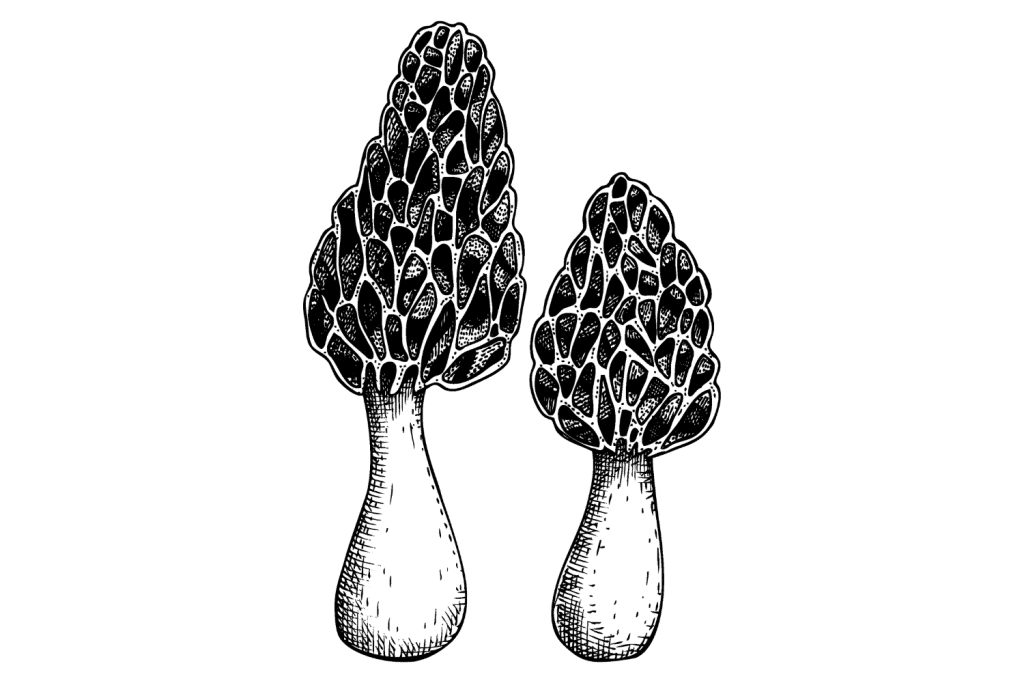
3. How Do I Identify Edible Morel Mushrooms?
Identifying morel mushrooms is relatively easy. Morels are one of the easier choice edibles to identify, thanks to their unique appearance. Although “false morels” do exist, they can be easily ruled out if you study the Morchella genus well enough before heading out into the field.
I recommend purchasing a decent field guide and/or downloading a mushroom identification app before heading out in search of morel mushrooms.
To get a positive ID on a morel, you must know the features of the Morchella species that grow in your area.
Morel mushrooms have a cone-shaped cap with a honeycomb-like texture. Colors range from yellow through to dark brown, and the stem is hollow and lightly colored. The size of a typical morel is around three inches from base to cap, but this can vary significantly depending on conditions, age, and species.
You should not only familiarize yourself with the appearance of “true morels” but also any “false morels” or look-alikes in your area. A regional field guide will inform you of any potentially poisonous look-alikes in your area and how to identify them.
4. Can Morel Mushrooms Be Cultivated?
Contrary to what many people think, morels have been successfully cultivated in artificial and natural environments. However, these mushrooms are yet to be commercially grown on a large scale due to the inconsistent results produced through cultivation.
When morel mushrooms are cultivated, production can vary dramatically from harvest to harvest. The quality of the mushrooms is also variable when these mushrooms are cultivated in a controlled environment.
With all that said, two Danish twin biologists, Jacob and Karsten Kirk, recently discovered a reliable method to cultivate substantial amounts of morels in a climate-controlled environment.
The twins developed the cultivation method in conjunction with Copenhagen University (The Morel Project) over four years. They’re able to produce around 10 kilograms per square meter — roughly 20 pounds per square yard — per year.
This new cultivation technique could change the market for these mushrooms. Costs for morels will likely take a dive if the cultivation technique becomes commercialized.
Karsten Kirk told the New York Times, “The cost per square meter for producing a morel will be roughly the same as producing a white button mushroom.”
Pretty soon, we could start seeing morels next to the button mushrooms in the supermarket year-round.
Related: How to Grow Magic Mushrooms (The Easy Way)
5. What Is the Best Way to Store Morel Mushrooms?
Once you’ve collected a haul of morel mushrooms, you’ll need to prepare and store them properly if you want them to last for more than a day. Fresh morels will keep in the refrigerator for two to three days if they’re properly cleaned with a brush and left in a paper bag or wrapped in a paper towel.
The mushrooms must be allowed to “breathe” when they’re stored fresh. Placing the mushrooms in a sealed container is a big no-no because the mushrooms will sweat and become slimy and foul as a result. By using a paper bag or wrapping them in a paper towel, you’ll prevent sweating, and any moisture released by the mushrooms will be absorbed by the paper-based material they’re stored in.
If you want morels to last longer than a few days, you’ll need to preserve them in some way.
You have three options if you want to preserve morel mushrooms long-term:
- Dehydration
- Freezing
- Pickling
Dehydration
Dehydration is the best way to preserve morels indefinitely. By drying the mushrooms out completely and storing them in a sealed container, they can be preserved for several years. Morels dry pretty well. The earthy, nutty flavors of the mushrooms intensify, and the texture becomes a little more chewy. The flavors of the mushrooms will degrade over time, but as long as they’re stored in a dark place, they’ll taste good for well over a year.
Morels can easily be dried by using a dehydrator. The mushrooms can be placed inside the dehydrator at a low temperature and checked regularly until they’re completely moisture-free. Alternatively, the mushrooms can be air-dried by laying them out on a sheet of paper in front of a fan — this takes a bit longer, but it basically does the same thing.
Once dried, the morels can be stored in jars with the addition of a small packet of food-safe silica gel to remove any remaining moisture that may be inside the mushrooms.
Freezing
Freezing morel mushrooms will give them a shelf life of over one year. The freezing process is pretty simple, but you mustn’t freeze them raw. Freezing any raw mushroom will destroy its texture. When it comes time to thaw them out and cook them, you’ll be utterly disappointed.
The best way to preserve morel mushrooms through freezing is to steam or boil them for a few minutes before spreading them out evenly on a baking sheet and placing them in the freezer. Once the mushrooms are completely frozen, they can be placed in freezer bags and stored in the freezer for later use.
Pickling
Pickling morel mushrooms is a great way to preserve the fungus while altering its flavor. Pickling is an age-old preservation technique that can increase the shelf life of a morel mushroom to up to six months.
Although all morels taste pretty good pickled, smaller mushrooms work best. If you’ve got a haul of mushrooms and plan on eating or drying a portion, save the smaller shrooms for pickling.
There are several ways to pickle morels. The basic process involves washing and cleaning the mushrooms thoroughly before cooking them for three to four minutes in a mixture of water, salt, vinegar, and spices. The mushrooms and pickling liquid are then poured into sterilized jars before sealing and storing in a cool, dark place.
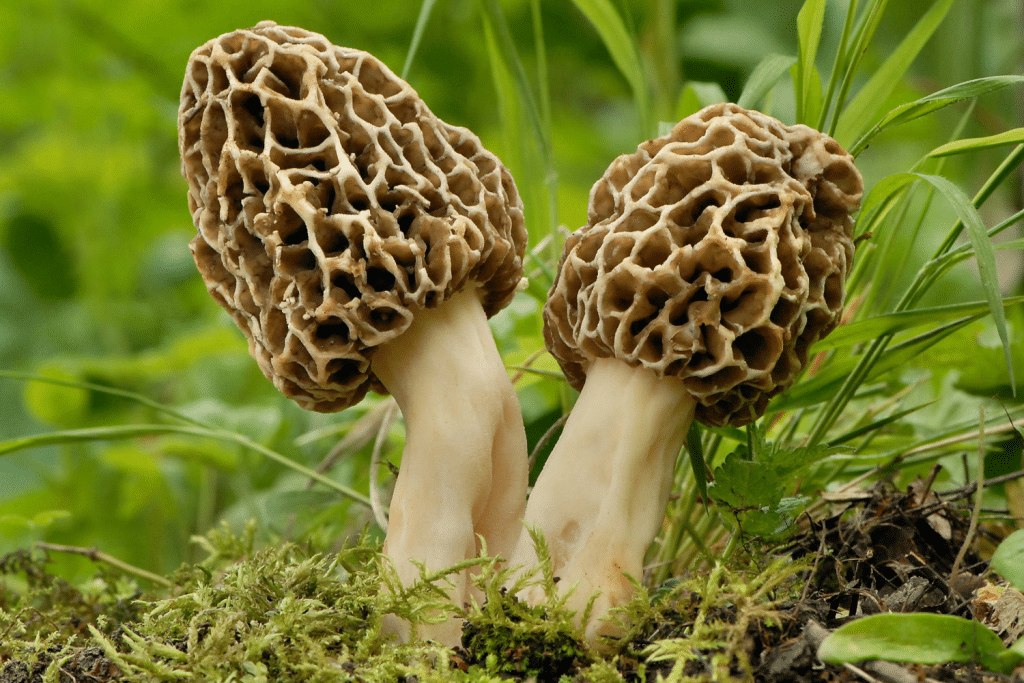
6. Are Morel Mushrooms Valuable?
Morels are a particularly valuable mushroom. Fresh morel mushrooms sell for 30 to 90 dollars per pound in the United States. Compared to the average button mushroom that sells for around four dollars per pound, that’s pretty expensive!
Morels and other mycorrhizal mushrooms, such as golden chanterelles (selling for up to 100 dollars per pound depending on the year), are so valuable because they’re almost impossible to cultivate.
Chanterelles, morels, and other mycorrhizal species must be harvested from the wild and can be incredibly difficult to find — this hikes the prices up dramatically.

